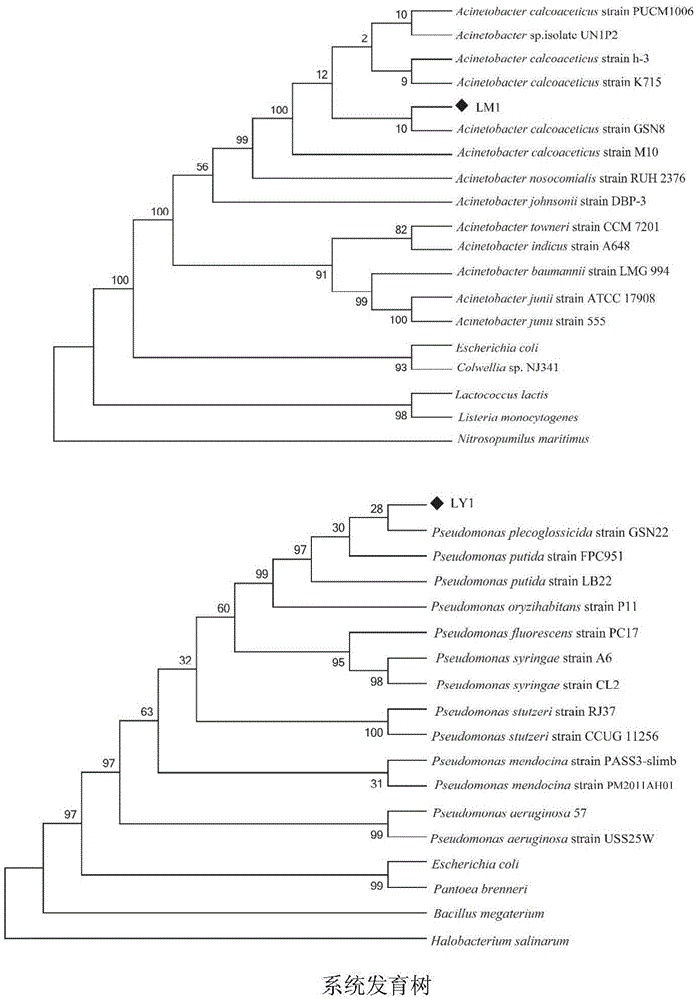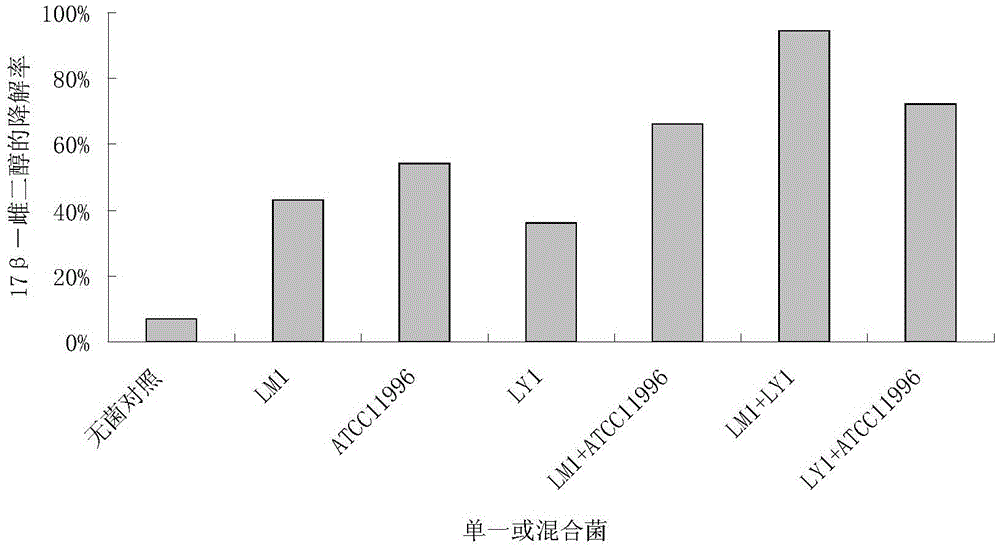Composite bacterium capable of quickly degrading 17Beta-estradiol and preparation method
A rapid degradation and estradiol technology, applied in the field of compound bacteria, can solve the problems of low adaptability and low degradation rate of 17β-estradiol, and achieve the effect of high synergistic symbiosis ability and efficient degradation
- Summary
- Abstract
- Description
- Claims
- Application Information
AI Technical Summary
Problems solved by technology
Method used
Image
Examples
Embodiment 1
[0037] The invention can prepare the compound bacteria which can rapidly degrade 17β-estradiol.
[0038] 1. Domestication, cultivation and isolation of strains LM1 and LY1
[0039] Collect samples from pig farms, chicken farms, cattle farms and piled livestock and poultry manures and waste treatment facilities, mix them according to the same mass ratio, take 50g of the mixed sample into a 1000mL Erlenmeyer flask, and then add 500mL sterile water Shake at 150rpm for 20 minutes, let stand for 5 minutes, take the upper suspension, add 5% to 50mL of inorganic salt medium, then add 17β-estradiol with a final concentration of 20mg / L, and do Repeat 2 times. After shaking culture at 120rpm and 25℃ for 5 days, take 10ml of each and mix, then take 5ml of mixed culture and add it to 50ml of inorganic salt medium with 20mg / L of 17β-estradiol. Cultivate under the same conditions. After it becomes turbid, take 1ml of culture and add it to 50ml of 20mg / L of 17β-estradiol in inorganic salt medium...
Embodiment 2
[0050] The characteristic detection and application experiment of the compound bacteria capable of rapidly degrading 17β-estradiol of the present invention.
[0051] 1. The response law of environmental factors in the degradation of 17β-estradiol by compound bacteria
[0052] (1) The effect of carbon-nitrogen ratio on the degradation of 17β-estradiol by compound bacteria
[0053] Take 0.5mL of 17β-estradiol stock solution and add it to 12 250mL Erlenmeyer flasks containing 100mL of nitrogen-free inorganic salt medium (remove the ammonium sulfate in the original inorganic salt medium), and add different flasks to 4 Erlenmeyer flasks. The amount of ammonium sulfate makes the C:N ratios in the four Erlenmeyer flasks 1:40, 1:20, 1:10, 1:1, respectively. Take 2ml of the composite bacterial suspension and add it to the Erlenmeyer flask. Use the remaining In the Erlenmeyer flask, each carbon-nitrogen ratio treatment was repeated twice, and finally cultured at 28°C and 150r / min for 4 days, ...
PUM
 Login to View More
Login to View More Abstract
Description
Claims
Application Information
 Login to View More
Login to View More - R&D
- Intellectual Property
- Life Sciences
- Materials
- Tech Scout
- Unparalleled Data Quality
- Higher Quality Content
- 60% Fewer Hallucinations
Browse by: Latest US Patents, China's latest patents, Technical Efficacy Thesaurus, Application Domain, Technology Topic, Popular Technical Reports.
© 2025 PatSnap. All rights reserved.Legal|Privacy policy|Modern Slavery Act Transparency Statement|Sitemap|About US| Contact US: help@patsnap.com



